Speaker Biographies
Paul Agnew
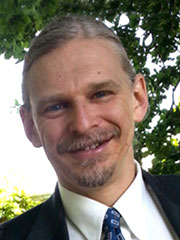
Paul is a geologist with more than 25 years of experience in minerals exploration with Rio Tinto Exploration. As Chief Geochemist for RTX, he spent more than a decade providing technical support to exploration programs for a wide range of commodities globally, as well as developing and implementing best practice in geochemical exploration throughout the organization. In 2010 he took the role of Chief Geologist-Technical Support and Technology Development, leading a team of technical specialists providing global support and managing internal and external R&D activities, focused on the delivery of innovative exploration technologies to improve the efficiency and effectiveness of mineral exploration.
Rodney Allen
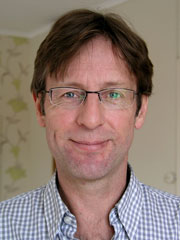
Rodney (Rod) is an Australian geologist with about 37 years of experience in mineral exploration and research applied to mineral exploration. For most of his career, he has straddled the fuzzy boundary between exploration and research, hopping from one to the other, or often standing with a foot in each. He received his B.Sc. at the South Australian Institute of Technology (formerly South Australian School of Mines) and worked a stint in exploration for Selection Trust and BP Minerals, before doing a Ph.D. and postdoc at Monash University on the volcanic setting of VMS deposits in Victoria, Tasmania, and Japan.
Since then, Rod has worked around the world as a consultant geologist for almost 20 years, carrying out assignments for mining companies, universities, and government agencies. Rod has enjoyed a long-term relationship with Tasmania and with the CODES research centre. He is perhaps best known for practical skills in interpreting volcanic successions, hydrothermal alteration, and the ore deposits that occur in them, having had the joy (or misfortune) to try to unravel the stratigraphy and structure of several strongly altered, deformed, and metamorphosed volcanic-hosted mining districts around the world. He has published the results of many but not all of these studies, especially in the SEG's journal Economic Geology.
Rod is currently adjunct professor in economic geology at Luleå University of Technology in Sweden, where he supervises Ph.D. students, and is Manager Geology R&D for the Boliden Mining Group.
Sarah-Jane Barnes
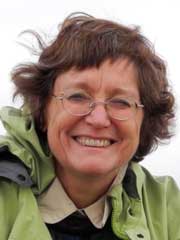
Sarah-Jane has been the Canada Research Chair in Magmatic Metallogeny at the Université du Québec à Chicoutimi, Canada, since 2003 and is also the directress of LabMaTer, a geochemical laboratory specializing in analysis of ore deposit materials. Her field of research is ore deposits associated with mafic and ultramafic rocks. She is the 2015 SEG Distinguished Lecturer. She was awarded the Past-Presidents' Medal from the Mineralogical Association of Canada in 2007 and the Gross Award in 1994 by the Mineral Deposits Division of Geological Association of Canada. She has given 30 presentations as part of short courses directed to industry and has published over 135 refereed articles. Currently, she is supervising 10 graduate students and postdoctoral fellows. She has trained 35 graduate students and postdoctoral fellows. She completed a B.Sc. (Hons) at the University of Witwatersrand (South Africa) in 1975. From 1976 to 1978 she worked as a geologist for Geological Survey Namibia. In 1979 she obtained an M.Sc. on serpentines of Namibia from the University of Cape Town (South Africa), supervised by Dr. D. Waters. In 1983 she was awarded a Ph.D. on the platinum group element potential of Abitibi komatiites from the University of Toronto (Canada), supervised by Prof. A.J. Naldrett. From 1984 to 1986 she completed her postdoctoral studies at the Geological Survey of Norway on the platinum group element potential of the Rana layered intrusion, supervised by Dr. R. Boyd. In 1986 she became a research associate at the Université du Québec à Chicoutimi, and a professor in 1990.
William Clarke
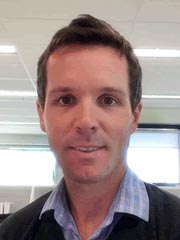
William (Will) graduated from the University of Melbourne with a B.Sc. (Hons.) degree in geology in 2006, before commencing work as a graduate with Newcrest Mining Limited in 2007. Since then, he has worked as a mine and exploration geologist on various styles of gold and copper deposits in New South Wales, Western Australia, Indonesia, and Fiji. More recently, Will has been working on the applications of Corescan hyperspectral data, focusing in particular on geometallurgical implications such as understanding fluorine deportment at Cadia East and improving alteration modeling at Lihir to support mining and metallurgical decision-making.
Andrew Davies
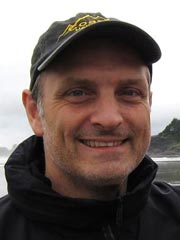
Andrew began his career in 1987 working as a field assistant for junior companies Cominco and MDRU on remote grassroots programs in western and northern Canada. Following completion of a B.Sc. (1994) at the University of British Columbia, he joined Kennecott Exploration (Rio Tinto) working in Canada and Central America on epithermal and porphyry projects. He completed a Ph.D. (2002) at CODES on Rio Tinto's Kelian epithermal gold deposit in Indonesia. This work led to a passion for integrated deposit- to district-scale thinking focused on the interplay of structure, hydrothermal system evolution, and brecciation processes. Following time in Peru with AngloGold, Andrew joined Teck Resources Limited in 2004. Since joining Teck, he has worked internationally in a variety of technical roles spanning epithermal, porphyry, and SHMS Zn-Pb systems, was General Manager Exploration for North America from 2007 to 2012, and is currently Teck’s Chief Geoscientist. In his current role, Andrew is responsible for geoscience leadership, leading practice development and geoscience talent development as foundations for success in exploration and deposit evaluation.
Cornel de Ronde
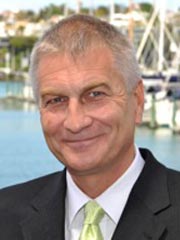
Cornel is a Principal Scientist at GNS Science in Lower Hutt, New Zealand. He leads the offshore minerals team there and, together with his team, has worked on numerous seafloor hydrothermal systems related to submarine arc volcanoes around the world. These include volcanoes of the Kermadec, Tonga, Mariana, Aeolian, and Tabar-Lihir-Tanga-Feni arcs. The team has systematically surveyed the entire length of the Kermadec arc and half of the Tonga arc for hydrothermal emissions. In total, in collaboration with international science partners, they have surveyed about 150 submarine volcanoes. More recently, de Ronde has worked in the NE Lau back arc and the Colville Ridge. Surveys were initially conducted from surface vessels, but, more recently, de Ronde and colleagues have focused on using deep diving vehicles, such as manned submersibles, ROVs, and AUVs, to provide information at a scale relevant to mineral deposits and to sample the hydrothermal vent systems for their fluids, rocks, and minerals. In addition, these near-seafloor surveys enable high-resolution bathymetric, water column (for plumes), and geophysical surveys (e.g., magnetics and side-scan sonar) to be done, allowing hydrothermal fluid upflow zones (and associated mineralization) to be delineated. de Ronde has co-edited a special issue in Journal of Geophysical Research and two others in Economic Geology on seafloor hydrothermal systems related arcs and back arcs.
Kathy Ehrig
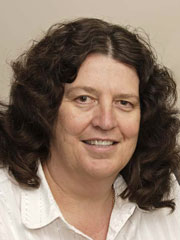
Kathy received a B.Sc. in geology from California State University, Fresno in 1984 and a Ph.D. in geology from the University of California, Berkeley in 1991. She began her career as a Geological Technician with the United States Navy in 1974, then went on to work with WMC and, later, BHP Billiton as Principal Geometallurgist at Olympic Dam. Her accomplishments at Olympic Dam and Yeelirrie have included leading the team that developed the geometallurgical models and metallurgical performance predictors for the entire Olympic Dam deposit, establishing the mineralogical relationship between sulfide mineralogy and concentrate grade, and developing quantitative relationships that predict mineral abundances based on drill core assays. At Yeelirrie, she developed the metallurgical performance predictors for a calcrete-hosted uranium deposit and built the world’s first clay mineral model for an entire deposit, which involved innovative adaptation of existing technology. She is a member of the Society of Economic Geologists, Geochemical Society, Geological Society of America, European Association of Geochemistry, Mineralogical Society of America, Mineralogical Association of Canada, and Australasian Institute of Mining and Metallurgy.
Nicholas Fitzpatrick
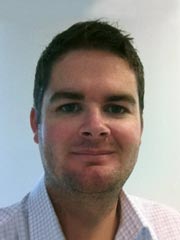
Nicholas (Nick) graduated from the Centre for Ore Deposit Research (CODES), University of Tasmania. He commenced working as an exploration geologist with Newcrest Mining Limited and worked on projects across Australia, Asia, and the Pacific. Nick has been involved in exploration for epithermal Au-Ag and porphyry Cu-Au in world-class districts including Cadia, New South Wales; Cracow, Queensland; Gosowong, Indonesia; Wafi-Golpu, Papua New Guinea; and Namosi, Fiji. Nick is part of Newcrest's technically focused exploration team based in Melbourne, Australia.
Karyn Gardner
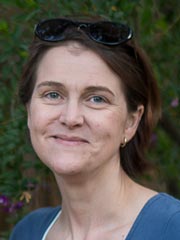
Karyn worked in geotechnical, resource geology, and senior mine geologist roles in predominantly hard rock gold mines for 13 years before joining Newcrest as a senior geologist in 2012. Since joining Newcrest, Karyn has been working on improving the geometallurgical domains and planning models at Telfer and, more recently, the Lihir deposit in Papua New Guinea.
Mark Hannington

Mark is the Goldcorp Chair in Economic Geology at the University of Ottawa and Helmholtz Professor at GEOMAR – Helmholtz Center for Ocean Research Kiel. Prior to joining the University of Ottawa in 2005 and GEOMAR in 2014, he was a senior research scientist at the Geological Survey of Canada for 15 years. His research combines the study of ancient ore deposits and active hydrothermal systems on the modern seafloor. He and his students have worked extensively on Precambrian volcanogenic massive sulfide deposits and also have participated on more than 35 research cruises to active volcanic systems in the oceans. From 2001 to 2008, he served as editor of Economic Geology. He is the recipient of the Duncan R. Derry Medal of the Geological Association of Canada (MDD) and the Silver Medal of the Society of Economic Geologists. He was made a Fellow of the Royal Society of Canada in 2012.
Cassady Harraden
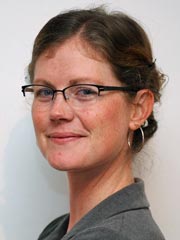
Cassady is currently pursuing a Ph.D. in geometallurgy at CODES at the University of Tasmania. Early in her career she worked for three years at the Pebble project, where she specialized in exploration targeting, geological modeling, advanced data analysis, and database management. Subsequently, she worked on several exploration projects in Nevada, Arizona, and Colorado, where she managed technical teams, several successful exploration programs, and modeling of geological data. She received a B.Sc. degree in geology with minors in GIS and mathematics from Fort Lewis College in Durango, Colorado, in 2007.
Anthony Harris
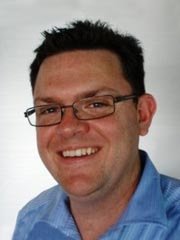
Anthony is Principal Geologist (Exploration) at Newcrest Mining Limited. Anthony's role at Newcrest is to enhance the skills of industry professionals via knowledge transfer and training programs underpinned by targeted work programs and research activities designed to advance conceptual models and exploration techniques. He is involved in technical guidance from exploration targeting through to building new geological models to enhance metal recoveries (having built new geological models for Wafi-Golpu and Lihir). Since joining Newcrest, he has worked on a variety of Au deposit types found in the circum-Pacific region, including Australia, Asia-Pacific, Africa, and the northern hemisphere. Anthony is the technical lead responsible for the advancement, application, and integration of new technologies like Corescan in Newcrest.
Douglas Haynes
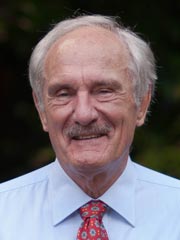
Douglas received his B.Sc. (Hons, first class) from the University of Western Australia in 1966 and his Ph.D. from Australian National University in 1972. He worked with Western Mining Corporation Ltd from 1972 to 1997 as Senior Company Consultant and as Chief Scientist, then at BHP Minerals and BHP Billiton Minerals from 1997 to 2001 as Chief Geologist. Since 2002, he has managed Douglas Haynes Discovery Pty Ltd. Douglas has initiated various successful mineral resource discovery projects, either directly or through collaborative effort, including seven large base metal or gold deposits: Olympic Dam Cu-Au-U-REE, Wirrda Well Cu-Au-U-REE (South Australia), Nifty Cu (Western Australia), Yandan Au (Queensland), Ernest Henry Cu-Au (Queensland), Kamoa Cu (Katanga Province, Democratic Republic of the Congo, working collaboratively with African Mining Consultants Ltd, with the deposit subsequently delineated by Ivanplats Ltd), and gold deposits, particularly Yam 14 within the Yamarna greenstone belt (Western Australia). His projects also include several smaller to very large but currently uneconomic Pb-Zn(-Cu) deposits in the Otavi Mountain Land (Namibia), the NW Mt. Isa Inlier (Australia), and in the Yeneena Basin (Australia). Douglas has produced and contributed to various publications on mineral deposit discovery and ore genesis problems, along with numerous presentations in Australia and overseas. He and his wife currently live near Maleny in the Sunshine Coast hinterland, Queensland, where they both manage a large and successful rainforest regeneration project. The project started in 2000, and is now recognized as an important contribution to the "Hinterland Bush Links" project in the region.
Nick Hayward
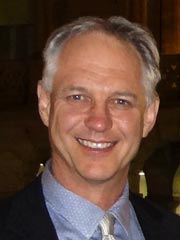
Nick obtained a Ph.D. degree in structural geology and tectonics in 1993 at James Cook University, studying the Appalachian orogen and Haile gold deposit. Since then, he has worked approximately 25 years in various global exploration roles, leading generative and evaluation work across some 40 countries for mostly Au, Ni, Zn, Cu, and Fe, as well as in brownfields and advanced project support, project management, research, and training. He started out with WMC Resources, then moved on to leadership roles with BHP Billiton as their Global Practice Leader–Structural Geology and Resource Targeting and, recently, with Teck Resources in dual roles as both the Regional Chief Geoscientist for Asia Pacific and Africa and as their Global Zinc Commodity Specialist.
Murray Hitzman
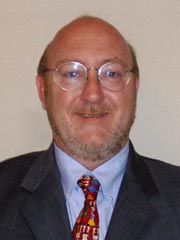
Murray has B.A.s in geology and anthropology (Dartmouth, 1976), an M.S. in geology (University of Washington, 1978), and a Ph.D. in geology (Stanford, 1983). He worked in the petroleum and minerals industries from 1976 to 1993, primarily doing mineral exploration worldwide, and was largely responsible for Chevron Corporation's Lisheen Zn-Pb-Ag deposit discovery in Ireland (1990). Murray served in Washington, D.C., in both the U.S. Senate (1993–94) and the White House Office of Science and Technology Policy (1994–96). In 1996 he was named the Fogarty Professor in Economic Geology at the Colorado School of Mines, and he served as head of the Department of Geology and Geological Engineering from 2002 to 2007. He served as the President of the Society of Economic Geologists in 2006. He is a member of the National Research Council Committee on Geological and Geotechnical Engineering. He has also served on the boards of a number of junior mineral exploration and mining companies.
James Lang
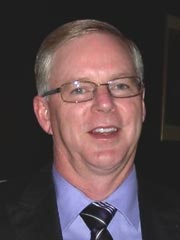
James (Jim) received a B.Sc. in geology in 1983 from Michigan State University, and M.Sc. and Ph.D. degrees in economic geology in 1986 and 1991 from the University of Arizona, where his research focused on porphyry deposits. From 1991 to 1998 he held research positions in the Mineral Deposit Research Unit at the University of British Columbia, where he led industry-supported research on alkalic copper-gold porphyry and intrusion-related gold deposits. From 1998 to 2012, Jim consulted through Lang Geoscience Inc to numerous junior and major exploration and mining companies around the world. Since 2004 he has worked primarily with Hunter Dickinson, where he was fortunate to be part of teams that discovered Pebble East in Alaska and the Xietongmen and Newtongmen deposits in Tibet. He formally joined Hunter Dickinson in 2012 as Senior Vice President Geology.
Ross Large

Ross is a Distinguished Professor of Geology at the University of Tasmania and the recent past director of the CODES ARC Centre of Excellence in Ore Deposits. He gained his B.Sc. (Hons.) from the University of Tasmania in 1969 and his Ph.D. from the University of New England in 1973. For 10 years Ross worked in the mineral exploration industry. In 1984 he joined the University of Tasmania, and five years later established the Centre for Ore Deposit and Exploration Science (CODES). Under his leadership, CODES grew to become recognized as one of the top industry collaborative ore deposit research centers in the world. Ross has over 100 publications in international journals and has gained a number of international awards for his research. His current research interest is the chemistry of past oceans and relationships to evolution, mass extinction, and mineral deposit cycles. Ross is the President of the Royal Society of Tasmania and the Chair of the Tasmanian Division of the Academy of Technology, Sciences and Engineering.
Lawrence Meinert
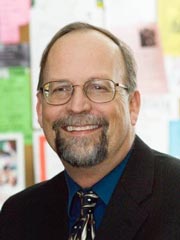
Lawrence (Larry) is head of the Mineral Resources Program at the U.S. Geological Survey, where he is responsible for leading the research, assessment, and information-gathering functions of more than 300 scientists. Previously, he served as an AAAS Congressional Fellow in the U.S. Senate and House of Representatives, staffing the Senate Energy and Natural Resource Committee and the House Science, Space, and Technology Committee. Prior to that he had a successful academic career spanning three different universities where he managed research laboratories and advised dozens of postdoctoral scientists and Ph.D., M.S., and B.S. students engaged in cutting-edge mineral resource research, funded by NSF and private industry. He has worked as a consultant for major mining companies in more than 50 countries. He has an active research program with more than 170 peer-reviewed publications and is chief editor of Economic Geology. He earned a Ph.D. degree in geology from Stanford University and a B.A. from Carleton College. In his spare time he operates a small home winery specializing in a barrel-fermented Bordeaux blend of Cabernet Sauvignon, Carmenere, and Malbec. In 2011 and 2014, he ran the Boston Marathon and, in 2013, completed the Marine Corps Marathon.
James Mungall
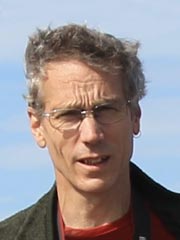
James received a B.Sc. in geology from the University of Waterloo in 1987 and then did M.Sc. and Ph.D. theses at McGill University. His early interests in rare subalkaline intrusions gradually morphed into a fascination for non-equilibrium processes in magmatic systems, which he pursued in his postdoctoral research at the Bayerisches Geoinstitut. In 1996, the world of mineral exploration tempted him away from academia for a couple of years until, in 1999, he found a niche at the University of Toronto where he could apply field, theoretical, and experimental approaches to the study of magmatic ore deposits. After spending several field seasons combining consulting and research on Ni-Cu-PGE deposits in northern Canada, he took a one-year leave of absence in 2008–09 to serve as Chief Geologist at Noront Resources Ltd, overseeing the geological staff working on Ni-Cu-PGE, Cr, and Fe-Ti-V deposits in the McFaulds Lake area of Ontario. He has since returned to the University of Toronto, where he holds the Norman Keevil Chair in Ore Genesis.
Brian McNulty
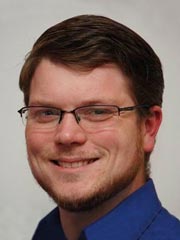
Brian received a B.Sc. in economic geology in 2007 from the University of Alaska Fairbanks. In 2014 he received an M.Sc. degree in geological sciences from the University of British Columbia, where he researched the lithological controls and hydrothermal fluid characterization of the Niblack VHMS deposit, Alaska. From 2007 to 2011 he was a project geologist on the Pebble Project. Brian is currently at the University of Tasmania, pursing a Ph.D. with CODES researching the geology and genesis of the mineral deposits of the Myra Falls VHMS district, Canada.
Nicholas Oliver
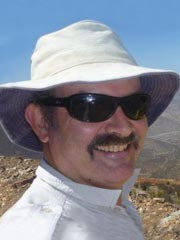
Nicholas (Nick) Oliver (SEG Fellow) is a Principal Consultant in HCOV Global, a consortium founded around structural geology. He was Director of the Economic Geology Research Unit and Professor of Economic Geology at James Cook University (JCU) in Australia from 1997 to 2010, and holds degrees from the University of Queensland and Monash University. He has postdoctoral fellowship experience with CSIRO and the Carnegie Institute Geophysical Laboratory, and teaching and research experience at Monash University, Curtin University, and JCU. Nick uses structural, geochemical, and geophysical approaches to provide practical consulting and training solutions for any hydrothermal system containing veins, breccia, or alteration.
John F.H. Thompson
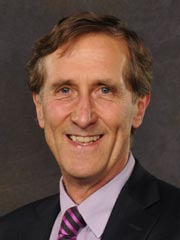
John has a B.A. from Oxford University and M.Sc. and Ph.D. degrees from the University of Toronto. In 1982, he joined the BP Minerals group (Rio Tinto), initially in Australia, followed by positions in the UK and Salt Lake, Utah, USA. In 1991, John became director of the Mineral Deposit Research Unit (MDRU) at the University of British Columbia, managing exploration-related research for over 20 companies. He returned to industry in 1998 as Chief Geoscientist for Teck, then Vice President Technology and Development. In the latter role, he managed technology and innovation programs and was involved in corporate development, including resource and technology-related transactions. He left Teck in 2012 and is now a Principal at PetraScience Consultants, an exploration, development, and technology consultancy, and is also the Wold Professor of Environmental Balance for Human Sustainability at Cornell University. John chairs the Board of Geoscience BC and is a founder and past president of the Canada Mining Innovation Council. He is a director of two other not-for-profit organizations and a past president of SEG. John is also a board member of one private company and has advisory roles with two other organizations.
Allan Trench
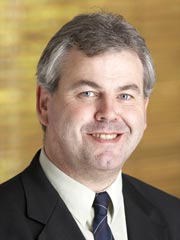
Allan is currently a Research Professor at the Centre for Exploration Targeting (CET) in Perth, and an industry consultant and independent director of a number of listed companies. He is Professor of Mineral and Energy Economics at the Graduate School of Business, Curtin Business School. Allan graduated as a geologist from the Royal of School of Mines, London and subsequently completed a Ph.D. in geophysics at Glasgow University. He then held a research fellowship at Oxford University prior to emigrating to Australia in 1991. Allan has worked in both minerals and energy across exploration, operations, and corporate roles—including with WMC, Barrick Gold, and Woodside Energy. He also holds an M.Sc. degree in mineral economics (Curtin) and an M.B.A. (Oxon). Allan is a member of SGA, a fellow of AusIMM (FAusIMM), and a fellow of the Australian Institute of Company Directors (FAICD).
Victor Wall
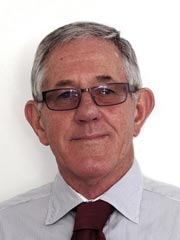
Victor (Vic) is a gray-haired geologist with 45 years of industry and research experience. Currently Special Advisor to the Continental Gold group of companies, he is Principal of Vic Wall & Associates, a geoscience consultancy. Following 25 years in Australian and North American academe, Vic held senior positions in multinational mining and exploration companies and consultancies, operating worldwide. Career highlights include the generation and advancement of precious, base, and energy metal projects as well mineral exploration and occurrence models, the co-founding of Colossus Minerals Inc., developing Continental Gold Ltd., and co-winning the Goldcorp Challenge.
Steve Walters
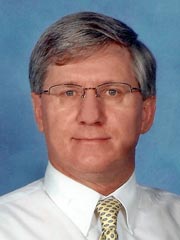
Steve has over 35 years’ experience in the global minerals industry in the fields of exploration and mining geology, technology development, applied research, geometallurgy, project management, and training. He has held senior positions at BHP Minerals and BHP Research and professorial positions at the University of Queensland (JKMRC) and the University of Tasmania (CODES), and he was a founding director of the GeoDiscovery consulting group. Steve was a key participant in the discovery in 1990 and subsequent development of the world-class BHP Billiton Cannington Ag-Pb-Zn deposit in the Mount Isa region. More recently, Steve was instrumental in developing and managing the AMIRA P843 Geometallurgical Mine Mapping and Modelling (GeM) project. This developed into the second largest project in terms of industry support in AMIRA history, addressing the emerging area of geometallurgical characterization linked to mine optimization and design. Steve is currently Research Director for the Collaborative Research Centre for Optimisation of Resource Extraction (CRC ORE). This continues a focus on whole of mine integration for what are at times poorly constrained rock-based manufacturing businesses. His passion is for rocks and, unfortunately, in more recent times, how to destroy them.